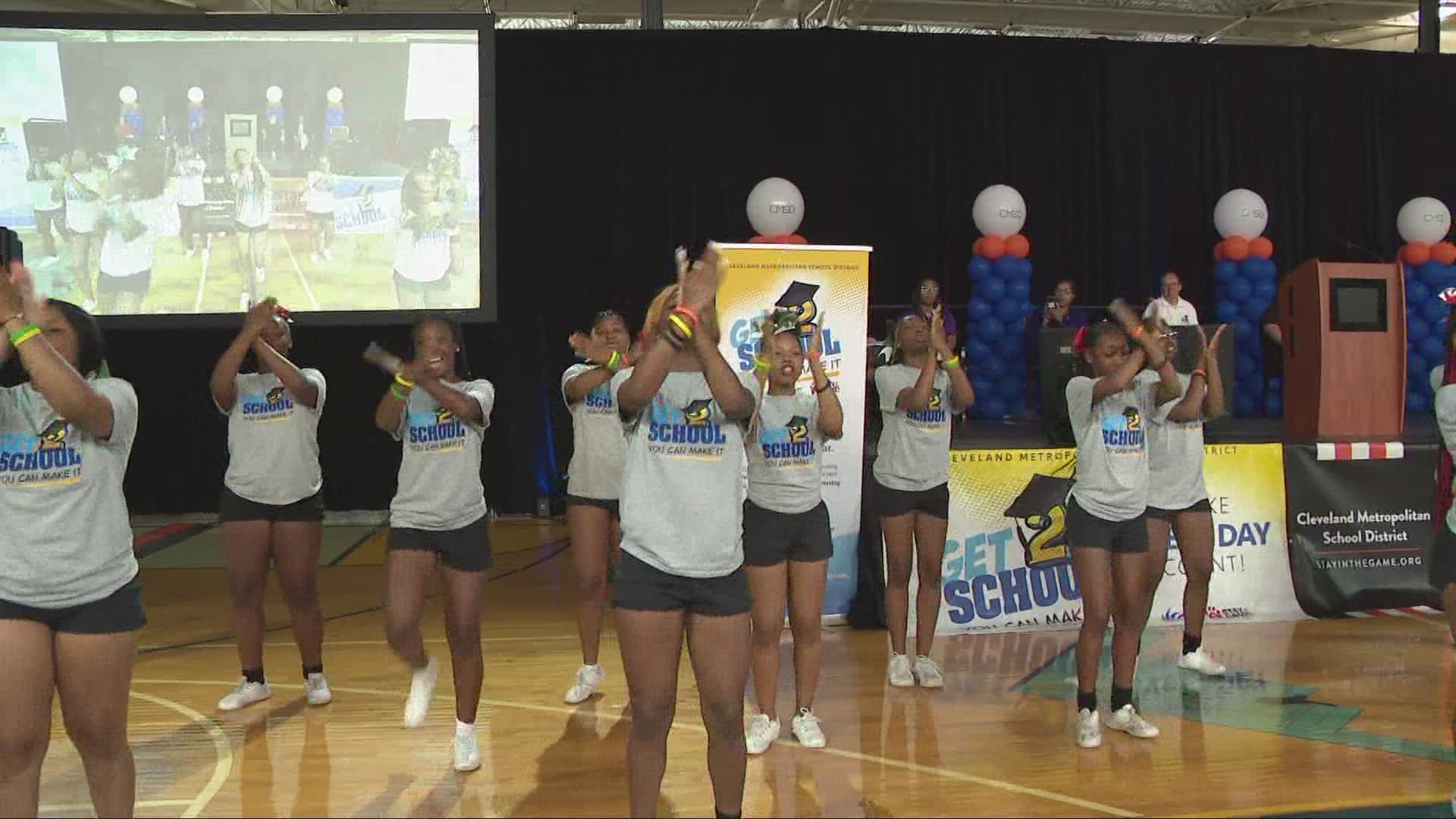CLEVELAND — As we kick off our Education Station campaign again this school year, we want to tell you about a reboot of an old effort that educators hope will be the key to increasing student attendance at Cleveland public schools.
The district has been seeing an increase in absenteeism since the pandemic began, so it decided to relaunch its "Get 2 School, You Can Make It!" campaign to curb chronic absenteeism. September is Attendance Awareness Month, and on Wednesday, students from several Cleveland Metropolitan Schools gathered for a pep rally at the East Professional Center for a more exciting, less punitive way to get kids to come to school every day.
"Positive energy and positive messaging is contagious," CMSD Attendance Director Lorri Hobson said, "so we stay away from the legalistic approaches."
"Get 2 School, You Can Make It!" was making strides before the pandemic caused chronic absenteeism to spike. Nearly half of Cleveland public school students were chronically absent in the first two months of last school year, meaning they missed at least 10% of days. In Ohio, that totals 18 days in a full school year.
"We know that if kids don’t come to school, it’s very hard for them to learn," Principal Dessie Sanders of Daniel E. Morgan School admitted. "It's very alarming for me. Very concerning."
With help from the Cleveland Browns Foundation and other partners, the "Get 2 School" attendance campaign highlights how chronic absenteeism can significantly decrease students' academic success. Chronically absent kids score an average of 12 points lower on state reading tests, 15 points lower on math tests, and are 34% more likely to be off track for graduation and 9% less likely to meet Ohio's Third Grade Reading Guarantee. Absenteeism is also disproportionately prevalent in underserved communities.
"Chronic absenteeism is the No. 1 indicator of educational inequity, because it is more common for our students of color and impoverished neighborhoods," Hobson says.
"We know that when we have kids that are young — 5, 6, 7, 8 years old — that's not a kid problem; that's a parent problem," Sanders added. "We want to help the parents in these communities so they can encourage the kids to show up."
This story kicks off our groundbreaking Education Station initiative, which returns Wednesday after a summer hiatus. You can expect weekly stories covering what's happening in Northeast Ohio's schools — from teacher shortages and changes to school policies to the challenges students face every day.
Next week we're excited to introduce you to our adopted school for the new year: Harvey Rice in Cleveland's Buckeye neighborhood. That will air next Wednesday at 5:30 p.m. on "What's New."

